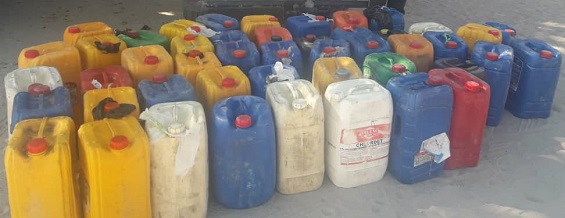
Fuel smuggling in the north continues to be a major problem

The country is currently faced with a major problem of fuel smuggling from neighboring Angola, an official highlighted this week.
Proposing measures to curb the activities, the Ministry of Mines and Energy, Deputy Director: Directorate of Petroleum Affairs, Carlo Mcleod in a presentation said, the government needs to budget funds specifically for infrastructure, equipment, and recruitment of young police border guards.
“The Ministry of Home Affairs, Immigration, Safety, and Security should consider deploying police officers from other regions to supplement the existing manpower capacity along the borderline in the affected areas and fines and sentences need to be more deterrent,” he added.
According to Mcleod, a mission undertaken, from 10 to 16 July to investigate the problem in the affected regions revealed that there are no delineated border fences, which has become a hurdle for law enforcement to maintain and control the situation.
“Namibia’s northern borders in the Ohangwena and Omusati regions, are facilitating entry points for smuggled fuel,” he said, adding that traditional homesteads near the borderline in both countries are used as storage of smuggled fuel.
Taxis were also identified as the primary consumers of smuggled fuel.
The Ohangwena region is more critical due to the proximity of service stations in Santa Clara, Angola, where the smuggled fuel is sourced, while Onamhinda in Oshikango which is partially fenced, is ineffective as criminals continue to cut the fence.
Meanwhile, Mcleod said the activities have now become a life-threatening concern and not only as an economic issue, as police officers are attacked by fuel smugglers, resulting in injuries and property damage.
In a budget speech in April this year, the Minister of Mines and Energy Tom Alweendo stated that fuel smuggling has become an increasing trend that has a serious negative impact on the economy.













































